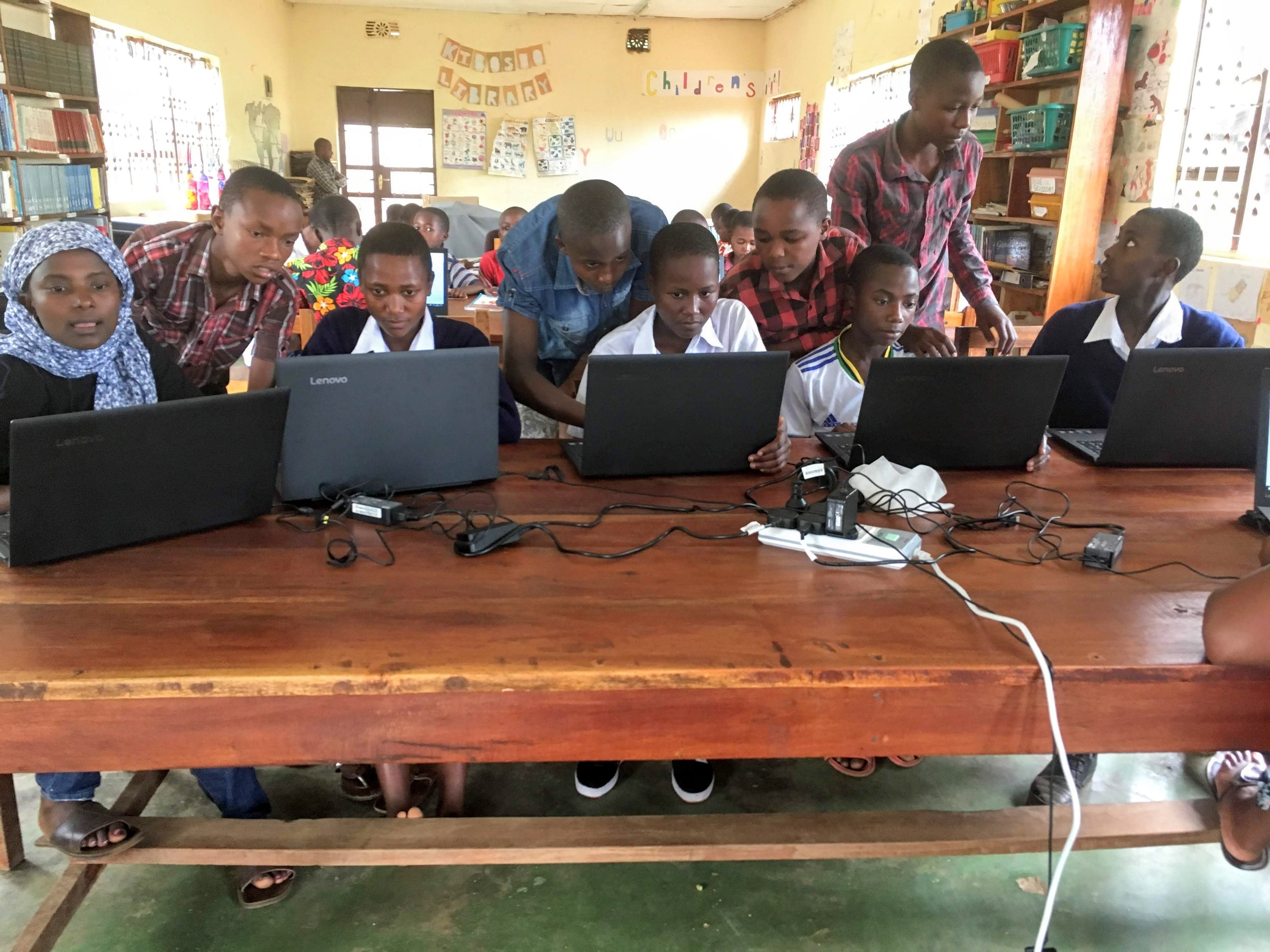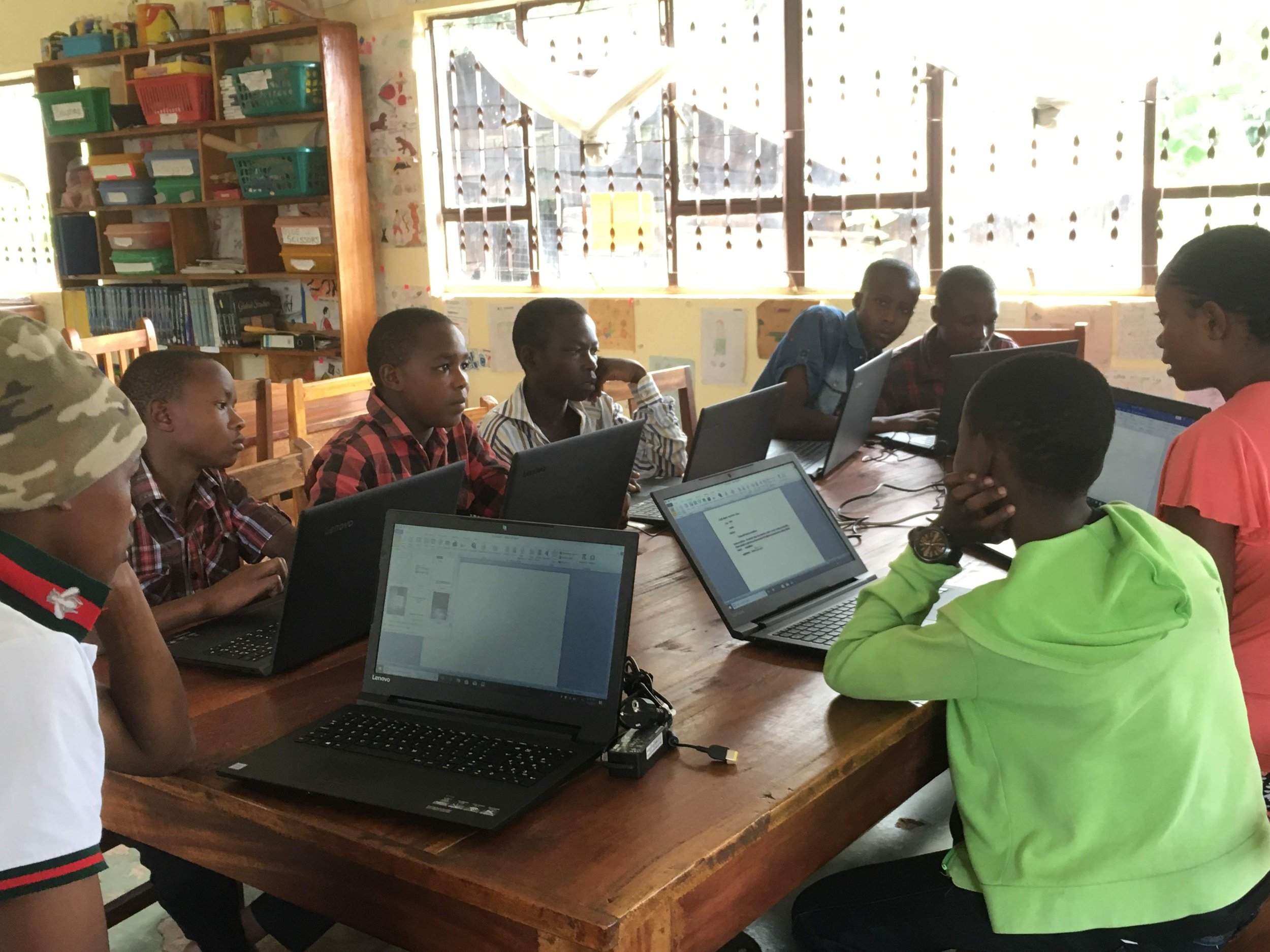
Our Programs
Digital Learning Program
Unless digital education is made more widely available, the existing digital divide gap will continue to discriminate against children and youth of lower socio-economic status, especially on the continent of Africa, and deprive them of education in ICT, as well as their general education, career advancement, livelihoods, and the growing opportunities already available to those who are connected. According to one United Nations official, “The result is that the number of young people stuck in working poverty grows and the cycle of working poverty persists…”
-
• Approximately 76% of the population in the United States has access to the internet.
• Over 91% of the population in The Netherlands has access to the internet.
• Less than 15% of the population that has access to the electrical grid in Tanzania, and a mere 3.5% has access to the internet.
-
• The digital learning program is located in urban and rural areas, and urban slums in Kenya, Morocco, Tanzania and Uganda.
• The program uses GAA’s community library system as a safe learning space for children and youth.
• Expansion of the program in Kenya and Uganda will take place in 2022.
-
• The digital learning program uses approved national Ministry of Education computer course curriculae in each of the program countries.
• Students learn computer basics such as computer terminology, common commands, features and functions, operating systems, the internet, the World Wide Web, using email, and other broad communication technology skills and concepts.
• All teachers have university-level training.
• All students are required to take digital learning examinations at the end of their coursework.
-
All basic digital learning program courses are free for students.
Digital Learning Program
IMPACT Report (AS OF 5/1/2022)
Number of Students: over 8,000
Number of Teachers: over 120
Number of Countries: 4 (Kenya, Morocco, Tanzania, Uganda)
Number of Locations: 22
Public Schools: 18
Faith-based Schools: 2
Technology Training Centres: 1
Community Library: 1
Partners:
Al-Alakawan University (Morocco)
Tangaza University (Kenya)
Arusha Municipal Government (Tanzania)
West Nile Regional Ministry of Education Office (Uganda)
The Program Provides:
Lenovo Laptop Computers
Samsung A7 and Samsung A8 Tablets
External keyboards for tablets
Coverings for computers and tablets
Secure storage containers for laptops and tablets
Internet Connectivity for locations
Routers
Modems
Teachers Workshop Trainings
Textbooks
Software Applications
Program Cost (per student): $47.50
Community Library Program
GAA’s Community Library Program provides educational resources, such as copies of textbooks required by Ministries of Education, that enable primary and secondary school students to prepare for exams. The libraries provide a safe place for students to study.
IMPACT Report
16,000+ visits per year at the Kibera Community Library in Kibera Slum, Nairobi, Kenya
6,000+ visits per year at the Kibosho Community Library on the slopes of Mt. Kilimanjaro, near Moshi, Tanzania
Cost per visit: $0.44 cents
-
— More than half of upper-secondary school age boys drop out of school in Kenya and Tanzania.
— It is estimated that only 12% of all girls living in Nairobi slums attend secondary school.
-
— GAA community libraries are located in urban slums and remote rural areas in both Kenya and Tanzania.
— In 2019 GAA is expanding its community library system to northern Uganda.
— Thousands of children and youth are provided with educational resources to which they would otherwise not have access.
-
— Each library has a librarian and is managed and operated by Global Alliance for Africa in collaboration with a local library committee.
— Each library includes a general collection, a children’s library, and a community room.
— All of the libraries are increasing their collection of primary and secondary school curriculum texts as listed and required for the successful completion of each grade level by the Ministries of Education in both Kenya and Tanzania.
— Community libraries in Kibera Slum, Nairobi, Kenya and Kibosho, Tanzania (on the slopes of Mt. Kilimanjaro) both have an internet cafe/resource center which provides access to email and a wide range of online educational resources.
— All of the libraries are developing outreach programs to the community through educational programs, literacy programs and other programs for children and adults.
Therapeutic Arts Program
The Therapeutic Arts Program not only operates in Kenya and Tanzania, but has also provided training in the refugee settlements and camps in the West Nile Region of Uganda for displaced people from Sudan and Congo.
IMPACT Report
Trained over 40 African Artists to provide therapeutic arts in Kenya, Tanzania
Reached over 4500 vulnerable and at-risk children and youth
-
— GAA’s Therapeutics Arts Program helps to provide spaces where children who are routinely stigmatized can gain a sense of belonging, and it supports children’s use of the arts for self-expression, which can foster a sense of agency, resilience, and increased confidence. Below are quotes from local para-professionals trained in the program who work directly with children and youth:
Grace: “We get positive feedback about how the program has helped with staying away from drugs, prostitution, and crime. Parents have shared appreciation that the kids perform better in school, concentrate, and connect better to others.”
Maeda: “The parents appreciate what I am doing with the children. One father told me after I talked to the child, he started attending school…. The teenagers have said, ‘I was thinking very differently before you helped me.’ They say I’ve helped them a lot.”
-
— GAA collaborates with faculty from the graduate art therapy programs at the School of the Art Institute of Chicago and The George Washington University in Washington, D.C. for the purpose of training artists and counselors in Tanzania, Kenya, and Uganda to incorporate paraprofessional level counseling and art therapy knowledge and skills in their work with children, youth, and families.
— These faculty members and other creative arts therapists, in collaboration with the East African Leadership Team, have worked with GAA to develop the curriculum and training materials used in the training workshops.
-
— The program currently consists of visual, music, dance and drama focused therapeutic arts programs in rural and urban locations in Kenya, Tanzania, and Uganda.
— The program is conducted collaboratively with East Africans and is aimed at the development of an African-based model of arts therapies.
— The capable and innovative paraprofessionals that Global Alliance works with have achieved recognition in their communities for meaningful programming and significant results with children, youth and families.
Join our community
Sign up with your email address to receive updates about Global Alliance Africa









